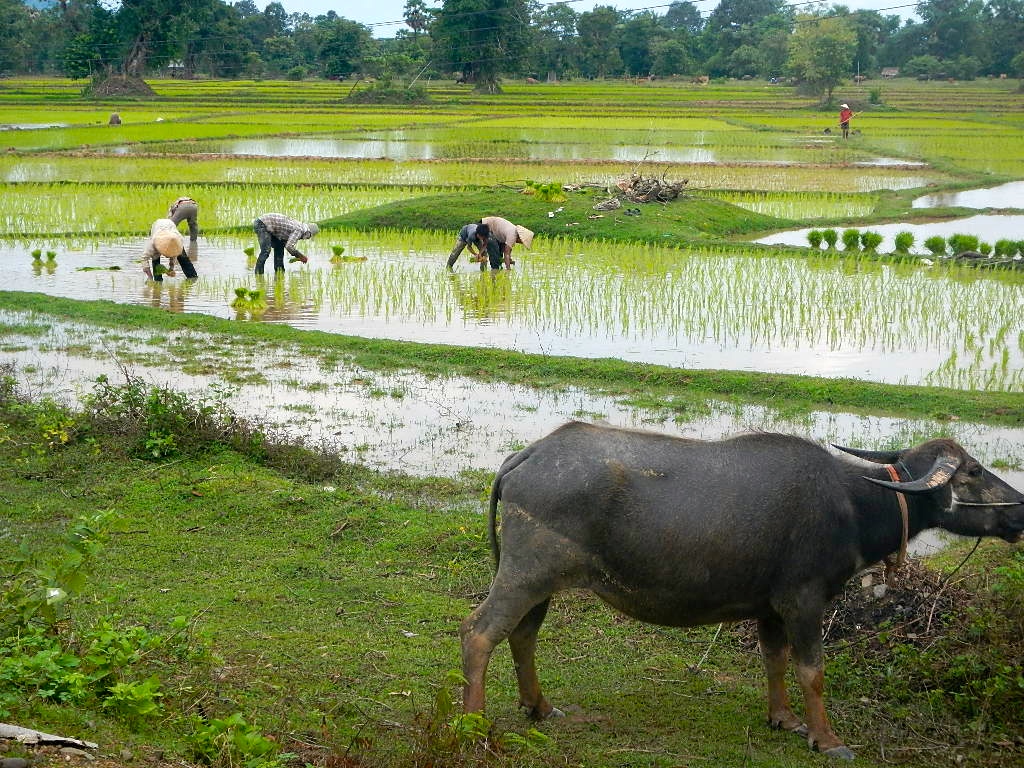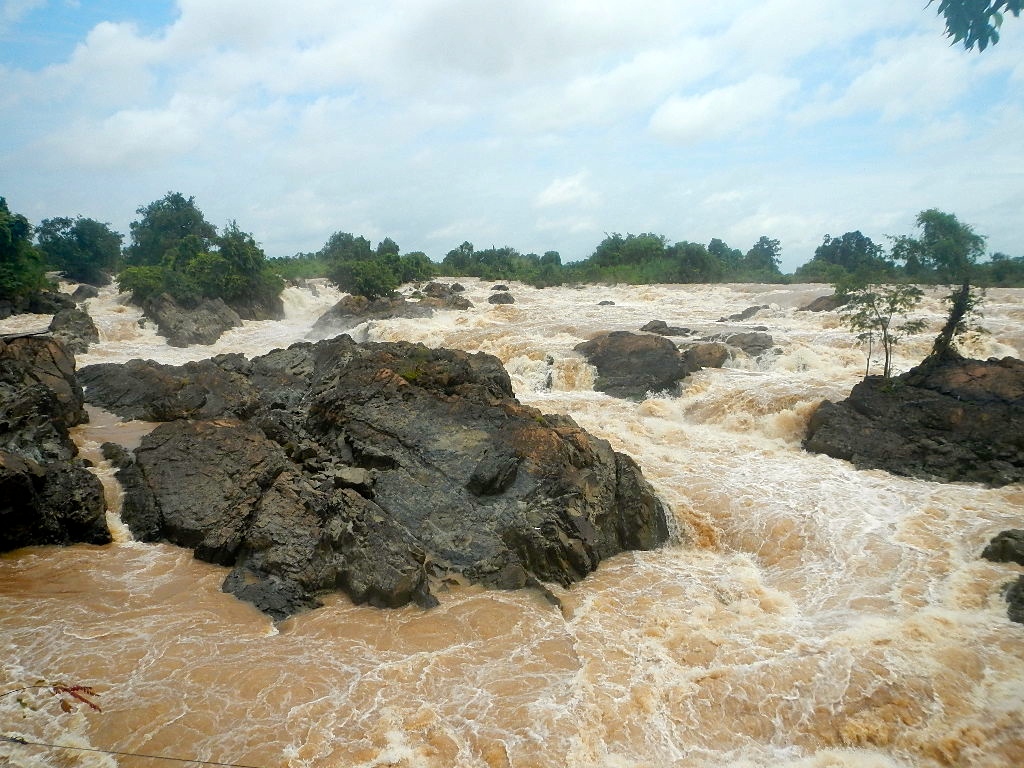I enter Laos (pronounced Lao) at one of the less frequented border crossings from Thailand and arrive at the town of Pakse. With just one strip of hotels and restaurants, Pakse usually serves as a launching pad to other destinations in southern Laos. I immediately decide to take a bus to the 4000 islands. In an hours time, I find myself on a “minibus”, or rather, a large enclosed wooden crate on the back of a truck packed with 26 Laotians and me. Over the course of 3 hours we travel down a two-lane dirt road. The driver stops sporadically to let some passengers off, as others get on. Sometimes, the stop is merely to pass packages, food and animals through the crate. We are held up often because of traffic jams caused by cow crossings and pigs napping. Finally, we arrive at the “port” for the islands, which is a muddy pit with a rickety wooden boat attached by rope.
The islands get their nickname “4000” due to the innumerable sand islets that appear and disappear with the water levels, according to rainy and dry seasons. At one time, they served as an important link for supply lines between Saigon and Laos during the French Colonial Era. I settle on the north side of Don Det in one of the many guest houses offering hammocks that swing over the water. The Mekong isn’t swimmable, but that’s not why the islands attract visitors. It is the laid back atmosphere, the authentic view of Laos culture and the beautiful scenery that make the most southern destination in Laos desirable.
Don Det is a fascinating place, I discover, as I ride my bike around the island. The path leads me along the river through small village communities where naked children run around in the mud with chickens clucking about. Buddhist temples are scattered through the villages, spotted by their brightly tiled images on white plastered walls. And all of a sudden, I find that I am completely surrounded by bright green rice fields for miles on either side. The monsoons have arrived, flooding the fields and filling the rice paddies with water. Workers bend over planting seeds or plowing oxen through the mud.

I cross over a bridge linking Don Det with Don Khon. I end my bike ride at the Tat Somphamit and Khone Phapheng, the largest (by volume) waterfall in southeast Asia. The incredible sheer force of the water over large boulders and the expansive size of the river is breathtaking. If you continue on down Don Khon to the southern tip, there will be a view of Cambodia in the distance. Sometimes, if you’re lucky, you’ll be able to see the rare Irrawaddy Dolphin, unique to the Mekong, swimming through the water.
On my way back, I am stopped by a group of villagers. An older man explains to me, in French, that several trees have fallen over the road and no one will be able to pass until they gather enough men to lift them. They invite me to come sit with them and drink Laos Laos, an illegal rice whiskey used in small villages to welcome outsiders. So I sit on this fallen tree, on an island in the Mekong, with a group of Laos villagers, drinking whiskey, and marveling at my long day.
~ A San Francisco native at heart, Tess developed wanderlust at a very young age. Although she’s traveled extensively through America, Europe, Asia, Australia and New Zealand, she continues to look for new adventures to blog about and now resides back in San Francisco. Follow her musings at http://tess-murphy.com and on Twitter at @Tesstravels.


